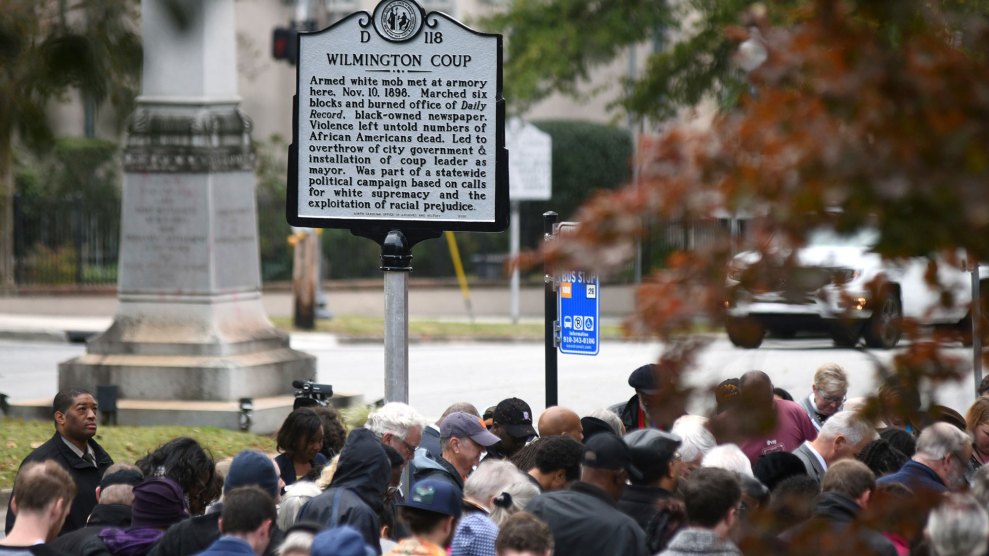
People stand under the new North Carolina highway historical marker to the 1898 Wilmington Coup during a dedication ceremony in Wilmington, N.C., on Nov. 8, 2019. Matt Born/The Star-News/AP

People stand under the new North Carolina highway historical marker to the 1898 Wilmington Coup during a dedication ceremony in Wilmington, N.C., on Nov. 8, 2019. Matt Born/The Star-News/AP